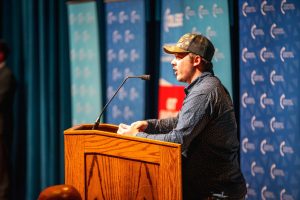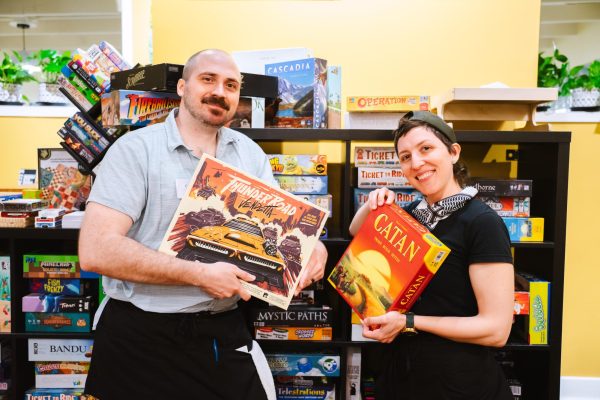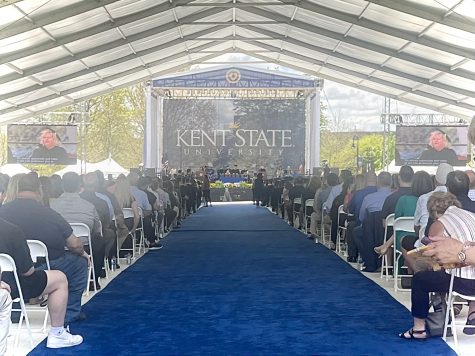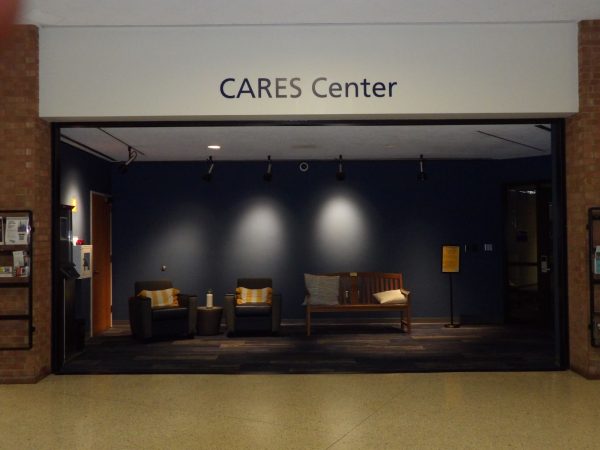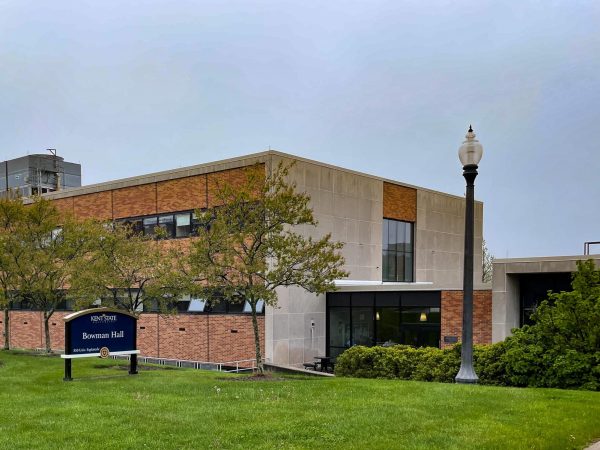Dealing with the emotional aftermath
September 11, 2006
The three trees, Sugar, Norwary, and Red Maple, represent the three areas that were attacked on Sept. 11. The trees are located on Risman Drive by the KIVA and Student Center. MICHELE ROEHRIG | DAILY KENT STATER
Credit: Jason Hall
E-mailing an orientation instructor from his computer, Greg Jarvie, dean of students, caught wind of the first World Trade Center collision by phone.
For the next few hours, he watched ABC’s Peter Jennings dismiss his original ideas of a misdirected commuter plane or unfortunate accident.
But returning home on Sept. 11, 2001, Jarvie dealt with an important breakdown in communication.
“My youngest (daughter) in second grade was never told about what happened in school,” Jarvie said. “Her older sister was watching it on television in the afternoon, basically giving her commentary about what was going on.”
Worrying that the events could make it seem as though the “world was coming to an end” for a child, Jarvie realized that dialogue would be one of the most important parts of post-Sept. 11 life.
Earlier in the day, he had discussed the tragedies with former Kent State President Carol Cartwright and a panel of university leaders, planning ways to support students with and without connections to New York, Washington, Pennsylvania and the Middle East. Jarvie also talked with political science experts, counselors and residence hall staff, as a campus management team shifted into “crisis prevention mode.”
He said there was a “wide range” of reaction that needed to be addressed that day.
“There was sort of a delay in emotion with students,” Jarvie said. “Some had major meltdowns, but we were all in this together.”
Being in it together included all the professors and instructors at the university. Jarvie recalls they were told to be “lenient with attendance and assignments” for the next few weeks – even with the toughest, most demanding classes.
“I don’t remember hearing flak from anyone,” he said.
Continuing the university’s “holistic” approach to Sept. 11, Jarvie said the day was “something that changed all our lives,” but doesn’t think it should be remembered ceremoniously every year.
After Sept. 11, Kent State dedicated three trees outside the Kiva as a memorial to those who died in the attacks. The memorial goes somewhat unnoticed to students, as there is no regular university ceremony remembering Sept. 11 – which Jarvie explained as intentional.
“We could’ve all just stopped when it happened, but the human spirit says keep going.”
Contact minority affairs reporter David Yochum at [email protected].









